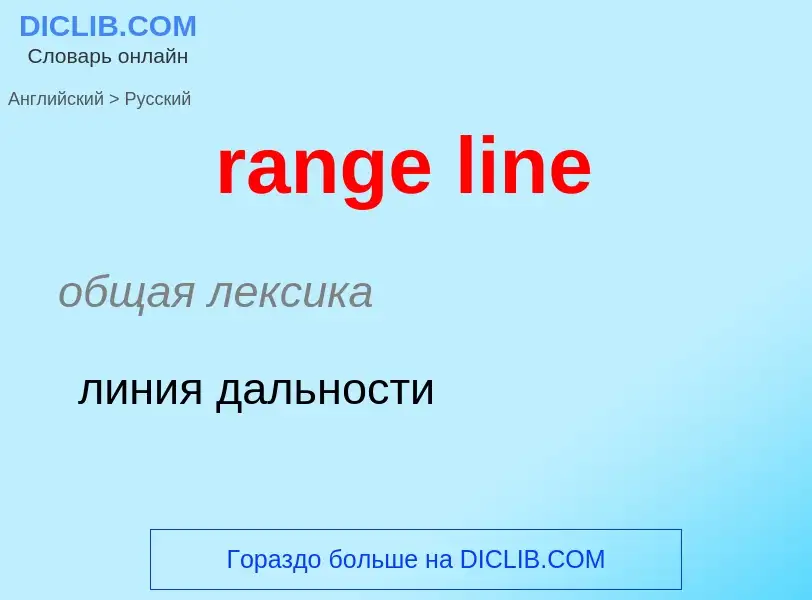Tradução e análise de palavras por inteligência artificial ChatGPT
Nesta página você pode obter uma análise detalhada de uma palavra ou frase, produzida usando a melhor tecnologia de inteligência artificial até o momento:
- como a palavra é usada
- frequência de uso
- é usado com mais frequência na fala oral ou escrita
- opções de tradução de palavras
- exemplos de uso (várias frases com tradução)
- etimologia
range in - tradução para russo
общая лексика
линия дальности
[fri:'reindʒ]
прилагательное
сельское хозяйство
находящийся на свободном выгуле
Definição
Wikipédia
True-range multilateration (also termed range-range multilateration and spherical multilateration) is a method to determine the location of a movable vehicle or stationary point in space using multiple ranges (distances) between the vehicle/point and multiple spatially-separated known locations (often termed "stations"). Energy waves may be involved in determining range, but are not required.
True-range multilateration is both a mathematical topic and an applied technique used in several fields. A practical application involving a fixed location occurs in surveying. Applications involving vehicle location are termed navigation when on-board persons/equipment are informed of its location, and are termed surveillance when off-vehicle entities are informed of the vehicle's location.
Two slant ranges from two known locations can be used to locate a third point in a two-dimensional Cartesian space (plane), which is a frequently applied technique (e.g., in surveying). Similarly, two spherical ranges can be used to locate a point on a sphere, which is a fundamental concept of the ancient discipline of celestial navigation — termed the altitude intercept problem. Moreover, if more than the minimum number of ranges are available, it is good practice to utilize those as well. This article addresses the general issue of position determination using multiple ranges.
In two-dimensional geometry, it is known that if a point lies on two circles, then the circle centers and the two radii provide sufficient information to narrow the possible locations down to two – one of which is the desired solution and the other is an ambiguous solution. Additional information often narrow the possibilities down to a unique location. In three-dimensional geometry, when it is known that a point lies on the surfaces of three spheres, then the centers of the three spheres along with their radii also provide sufficient information to narrow the possible locations down to no more than two (unless the centers lie on a straight line).
True-range multilateration can be contrasted to the more frequently encountered pseudo-range multilateration, which employs range differences to locate a (typically, movable) point. Pseudo range multilateration is almost always implemented by measuring times-of-arrival (TOAs) of energy waves. True-range multilateration can also be contrasted to triangulation, which involves the measurement of angles.







![Baby free range [[chicken]] in the hand of a person in [[Ishwarganj Upazila]], [[Mymensingh]], [[Bangladesh]] Baby free range [[chicken]] in the hand of a person in [[Ishwarganj Upazila]], [[Mymensingh]], [[Bangladesh]]](https://commons.wikimedia.org/wiki/Special:FilePath/Baby Chicken in Ishawarganj, Mymensingh, Bangladesh.jpg?width=200)
![Small-scale free range farming in the [[Northern Black Forest]] Small-scale free range farming in the [[Northern Black Forest]]](https://commons.wikimedia.org/wiki/Special:FilePath/Busenbach Freilandhaltung-Hühner.jpg?width=200)

![Free range ducks in [[Hainan]] Province, China Free range ducks in [[Hainan]] Province, China](https://commons.wikimedia.org/wiki/Special:FilePath/Duck farm in Hainan 02.jpg?width=200)
![geese]] in Germany geese]] in Germany](https://commons.wikimedia.org/wiki/Special:FilePath/Kirbachhof Gaense.jpg?width=200)

